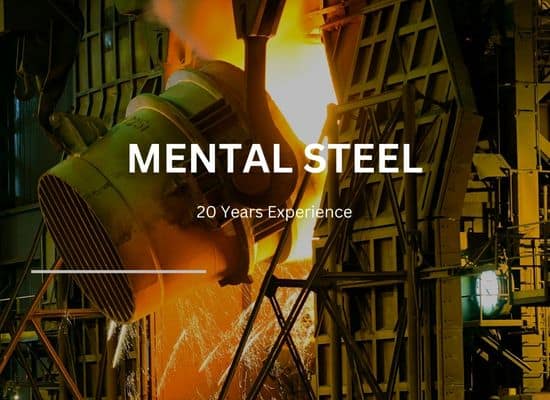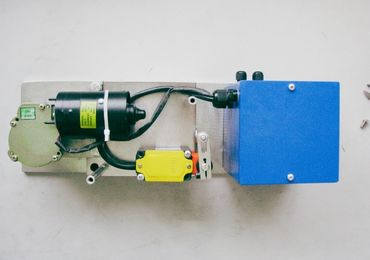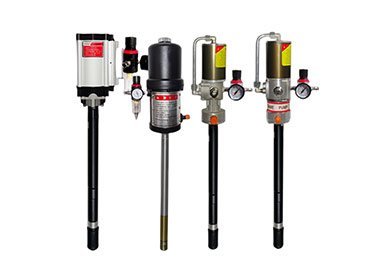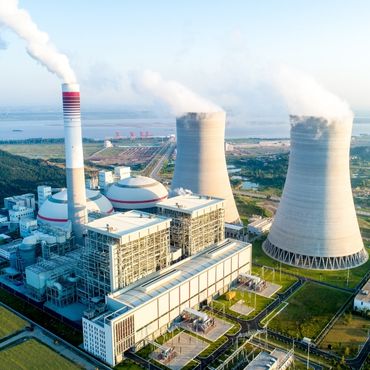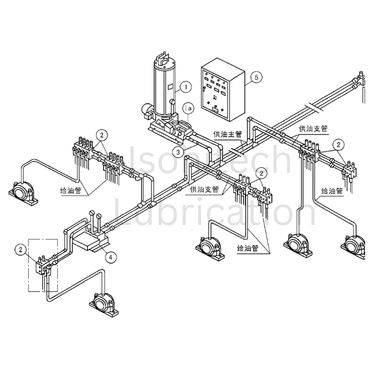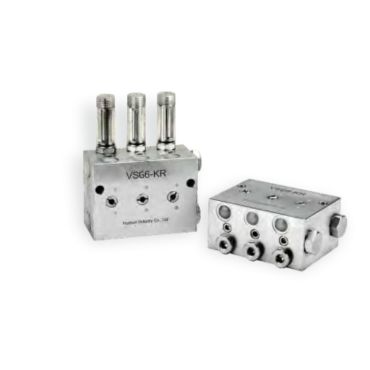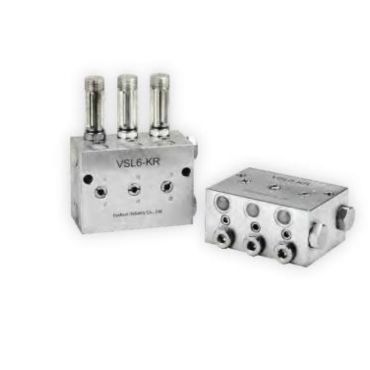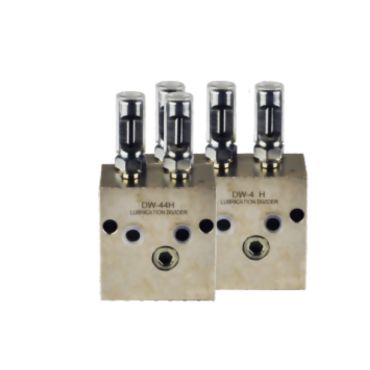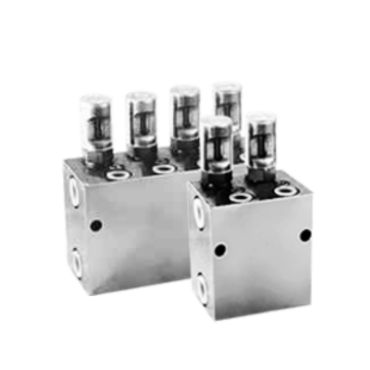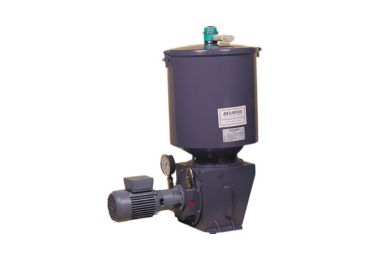ISOHITECH DUAL-LINE LUBRICATION SYSTEMS
The dual-line lubrication system is a type of centralized lubrication system that uses two main lines to distribute lubricant to multiple points in a machine or system. The system features a central pump that delivers lubricant to the two main lines, one for the primary system and one for the secondary system. Each line has a series of metering valve, such as dual line block, that delivery precise amounts of lubricant to designated lubrication points.
If you go to some heavy-duty workshops, like mining, cement plants, metal steel factory etc, you will see these bigger stationary machinery work very well. The system is benifit for the bearings,gears or chains.
- The massive grease points required, could be up to 2000 points,120M
- Easy extend and reduce the points
- suitable for the wet,dirty and humid envoirement
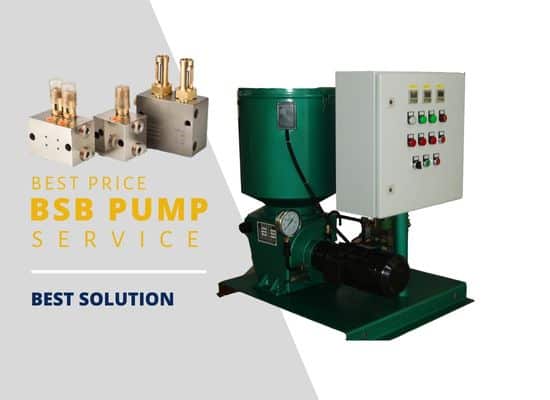
WHAT IS DUAL-LINE LUBRICATION SYSTEM
The dual-line lubrication system is used for large stationary equipment. You will see the two main lines in the system, the two lines working with the metering device used to deliver the precious grease to the large vol. required. In most time,we could connect the downstream metering units to increase the points to receive the small lubricant vol.
The main system is combined with a set of bs-b grease pump, a directional control valve, metering distributors,a switching device, and a control monitor.
The lubricant is pumped into the two lines and then the direction control valve is conducted to pump into the metering units.It divided into tow half-cycle time.
The advantage of the dual-line system is if one of the points has a problem, the rest points won’t be effected.
WHAT DOES DUAL-LINE LUBRICATION BENEFIT FOR MENTAL STEEL INDUSTRY?
Here are some benefits of dual-line lubrication systems:
1. Consistent Lubrication:Make sure the machinery operates smoothly and efficiently.
2. Cost-Effective: The dual-line system is a cost-effective way to deliver lubrication to multiple points saving on labor, maintenance, and lubricant costs.
3. Reliable: Dual-line lubrication systems are known for their reliability and longevity.
4. Minimal Downtime:Dual-line lubrication systems can avoid costly shutdowns and maintenance downtime.
5. Increased Equipment Life: Dual-line lubrication systems are designed to help prolong the life of machinery by providing consistent lubrication.
- Reduce the maintance
- Reduce the spare parts
- Protect the operator
- Increase the reliable
Dual Line Lubrication Systems Application (3)
Dual Line Metering (5)
Directional Valve (2)
Dual Line Lubrication Systems Benification
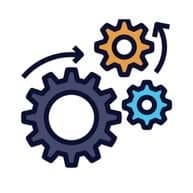




- Component Of The Dual Line System
- Description Of The Dual Line Lubrication System
- Application
- Benifit Of The Dual Line System
- Video
- Catalogue
Dualine lubrication systems have become a popular choice in industries where continuous duty operation is necessary. These systems can be found in a wide range of applications, from heavy-duty manufacturing equipment to power generation machinery, providing many benefits to equipment users. The system consists of various components that work together to provide automatic lubrication. Components used in designing a Dualine lubrication system may include dual-line valves, lubricators, reversing valves, central stations, controllers, and spray systems. With their efficient design and effective lubrication delivery, Dualine lubrication systems are an excellent choice for companies seeking to ensure their machinery operates smoothly and reliably.
Pump Station
Dualine valves in the system can receive lubrication from a variety of lubricators such as manual, electric, and pneumatic, which are responsible for storing and pumping lubricant.
Change Valve
The function of the Dualine valves in the system is to regulate and control the distribution of lubricant by altering the flow and direction of pressure, leading to the cycling of divider valves. The valves operate by toggling between two lines of lubricant and ensuring that each line receives an equal amount of lubrication. When activated, the valve diverts the pressure to one line and then the other, causing the divider valve to cycle and deliver lubricant to the equipment. This precise regulation of lubrication delivery by the Dualine valves ensures optimal performance and longevity of the machinery while minimizing the risks of damage due to insufficient or excessive lubrication.
Metering Valve
The dual line metering valves has different kinds of the typs,VSG,VSL,DM&DDM,ZV-B,and SSPQ type.These valves are equipped in the system to delivery the grease or oil.
Controller
The dual line lubrication system controller is usually unstandards.We usually design the system based on the requirement.With the touch screen and plc controlled,the lubrication system could adjustable at field via change the modules by the operator.The system could add the digital pressure switch to witness the complete system.
The dual-line systems are a type of lubrication system that is designed to lubricate large systems with dispersed lubrication points. These systems use two main lines that are supplied alternately with lubricant from a high-pressure pump via a change-over valve at up to 400 bar (5,800 psi). Branch lines, along the main lines, are connected with dual-line metering devices to supply a large volume of lubricant to the lubrication points.
One of the benefits of these systems is that they are flexible and easy to design. They can be extended or reduced easily by installing additional metering devices or by removing them, without requiring a redesign of the system. Dual-line metering devices can also be combined with downstream progressive metering devices to increase the total number of lubrication points receiving small lubricant amounts.
The dual-line systems can dispense a precise, metered amount of lubricant to up to 2,000 lubrication points over long distances up to 120 m (both side) and more, depending on case values. Even if one pair of outlets becomes blocked inside one metering device, the dual-line systems provide sufficient lubrication for the rest of the system’s lubrication points.
The function principle of the dual-line systems consists of two half-cycles. In the first half-cycle, the lubricant is pumped into the main line (A) and the main line (B) is connected to the relief line. The lubricant, which is conducted by the change-over valve, is supplied to the metering devices. The pistons of the metering devices are moved into their adjusted end positions, thus dispensing an exact, metered quantity of grease. Once all metering devices have dispensed their lubricant to the consumption point, the system is hydraulically closed, which causes the pressure in main line (A) to rise until the preset pressure at the end-of-line pressure switch (mounted in the main lines prior to the last metering device) is reached. This pressure switch then signals an electric pulse to the control unit, which turns the pump off and signals the change-over valve to relieve main line (A), and the pause time starts. At this stage, half of the lubrication points in the system have been lubricated. In the second half-cycle, main line (B) is pressurized and the cycle continues as before.
The dual-line lubrication systems are designed to be versatile and work with different types of lubricants. They can be used with oil, semi-fluid grease and hard grease up to NLGI grade 2, while harder greases of NLGI grade 3 can only be used after consultation and determination with dual line system.
These lubrication systems are well-suited for a variety of applications in heavy industry, metalworking plants, pulp and paper production, mining, mineral processing, power plants, cement factories, steel works, and more. They are particularly effective in harsh operating conditions involving potentially high lubrication-point back pressure, dirty, wet or humid environments, and low temperatures.
With their ability to deliver precise, metered amounts of lubricant to large numbers of lubrication points over long distances, the dual-line lubrication systems are ideal for use in large-scale industrial operations that require reliable, efficient lubrication systems.
1. Efficient and accurate lubrication: Dual-line systems can deliver precise, metered amounts of lubricant to a large number of lubrication points over long distances, ensuring that machinery is properly lubricated and functioning optimally.
2. Flexibility and easy design: Dual-line systems are simple to design and can be extended or reduced easily by installing additional metering devices or by removing them, without requiring a redesign of the system.
3. Durability: These systems are highly resistant to harsh operating conditions, including high lubrication-point back pressure, dirty, wet or humid environments, and low temperatures.
4. Reliable operation: Dual-line systems operate effectively in heavy industry, metal working plants, pulp and paper production, mining, mineral processing, power plants, cement factories, steel works and other industries.
5. Cost-effective: With their ability to lubricate many points with a single system, dual-line systems can be a cost-effective solution for industrial operations.
6. Minimal maintenance: Dual-line systems require minimal maintenance compared to other lubrication systems.
7. Enhanced safety: Proper lubrication through the use of dual-line systems can help reduce the risk of equipment failures and accidents, thus enhancing workplace safety.
Dual line lurbication line in Isohitech Lubrication workshop
Isohitech Lubrication Service
Isohitech lubrication is focused on the development of lubrication technology. Quality is crucial for heavy-duty equipment, for us, we have built a trail line in our workshop, we will test every metering unit in our workshop and guarantee 12 Month free spare parts service.
Isohitech could also provide products from other famous brands in the world and provide rebuilder service for these brand.
A dual-line lubrication system is a type of centralized lubrication system that delivers precise, metered amounts of lubricant to a large number of lubrication points over long distances using two main lines that are supplied alternately with lubricant from a high-pressure pump via a change-over valve at up to 400 bar (5800 psi). Branch lines, along the main lines, are connected with dual-line metering devices to supply a large volume of lubricant to the lubrication points. These systems are designed for large systems with dispersed lubrication points that require varying lubrication quantities and can be used with oil, semi-fluid grease and hard grease up to NLGI grade 2. Dual-line lubrication systems are versatile, durable, and reliable, making them well-suited for a variety of industrial applications in harsh operating conditions.
The main purpose of a DM (Dual Line Metering) valve in a dual-line grease lubrication system is to accurately meter and distribute grease to lubrication points. Each DM valve has two outlets, and when one outlet is supplied with grease, the other outlet is relieved. The DM valve distributes the precise amount of grease required for each lubrication point in the system by adjusting the size of its internal piston, which regulates the volume of grease that is dispensed through the outlet. By providing precise and accurate metering of grease to each lubrication point, the DM valve ensures that the equipment runs smoothly and efficiently, while reducing the potential for equipment damage or failure due to incorrect lubrication.
The three main types of lubrication systems commonly used in various mechanical applications are splash, pressure, and mist lubrication systems. Additionally, there is also a fourth type called a recirculating oil system that is often used in large industrial machinery. Let me explain each of these in more detail:
1. Splash Lubrication System: This system relies on the rotation of a gear or other mechanical component to create an oil splash that lubricates the surrounding parts. The rotating part dips into a lubricating oil sump, and as it rotates, the oil is thrown up onto the surfaces that require lubrication. This method is commonly used in small engines and some automotive applications.
2. Pressure Lubrication System: In this system, lubricating oil is pressurized and circulated throughout the mechanical components using a pump. The oil is supplied under pressure to specific points where it is needed, ensuring effective lubrication even at higher speeds or loads. Pressure lubrication systems are commonly found in automotive engines, large stationary engines, and industrial machinery.
3. Mist Lubrication System: This system uses compressed air to generate a fine mist of oil particles, which is then directed to the areas that need lubrication. The tiny oil droplets can suspend in the air and be carried through pipes or channels to reach the machinery’s moving parts. Mist lubrication systems are often used in certain types of gas turbines, high-speed compressors, and some precision machinery.
4. Recirculating Oil System: This type of lubrication system is designed for larger industrial machinery, such as turbines, pumps, and heavy-duty equipment. It involves continuously pumping and filtering a large volume of oil to ensure proper lubrication and cooling of the machine components. The oil is typically collected in a reservoir, filtered, and then pumped back into the system through various channels and passages.
These lubrication systems play crucial roles in maintaining the smooth operation and extending the lifespan of mechanical components by reducing friction and wear. The choice of the lubrication system depends on factors such as the application, size of the machinery, operating conditions, and maintenance requirements.
The type of lubrication system most commonly used depends on the specific application and the machinery involved. However, among the three main types I mentioned earlier, pressure lubrication systems are generally the most common.
Pressure lubrication systems provide more precise control over the distribution of lubricating oil and ensure effective lubrication even at high speeds and loads. They are widely used in automotive engines, heavy machinery, industrial equipment, and other applications where reliable and consistent lubrication is critical.
That being said, it’s important to note that different types of machinery and systems may utilize different lubrication methods based on their specific requirements. For example, smaller engines and certain types of precision machinery may employ splash or mist lubrication systems, while larger industrial machinery often incorporates recirculating oil systems.
Ultimately, the choice of lubrication system depends on factors such as the size of the machinery, operating conditions, load, speed, precision, and maintenance requirements of the equipment.
Dual line typically refers to a communication system that allows for the simultaneous use of two lines or channels. It can be applied to various contexts, such as telephony or networking.
In the context of telephony, a dual line phone allows you to have two separate phone lines connected to the same device. This means you can receive and make calls on two different phone numbers without the need for additional devices.
In the context of networking, dual-line configurations often refer to redundant connections that provide backup or load-balancing capabilities. For example, in a dual-line internet connection, you may have two separate physical connections to your Internet service provider, effectively providing redundancy in case one line fails. This setup can also increase network capacity by distributing the traffic across two lines.
It’s worth noting that “dual line” can have different meanings depending on the specific context, so if you have a particular application or scenario in mind, please provide more details and I’ll be happy to assist you further.




